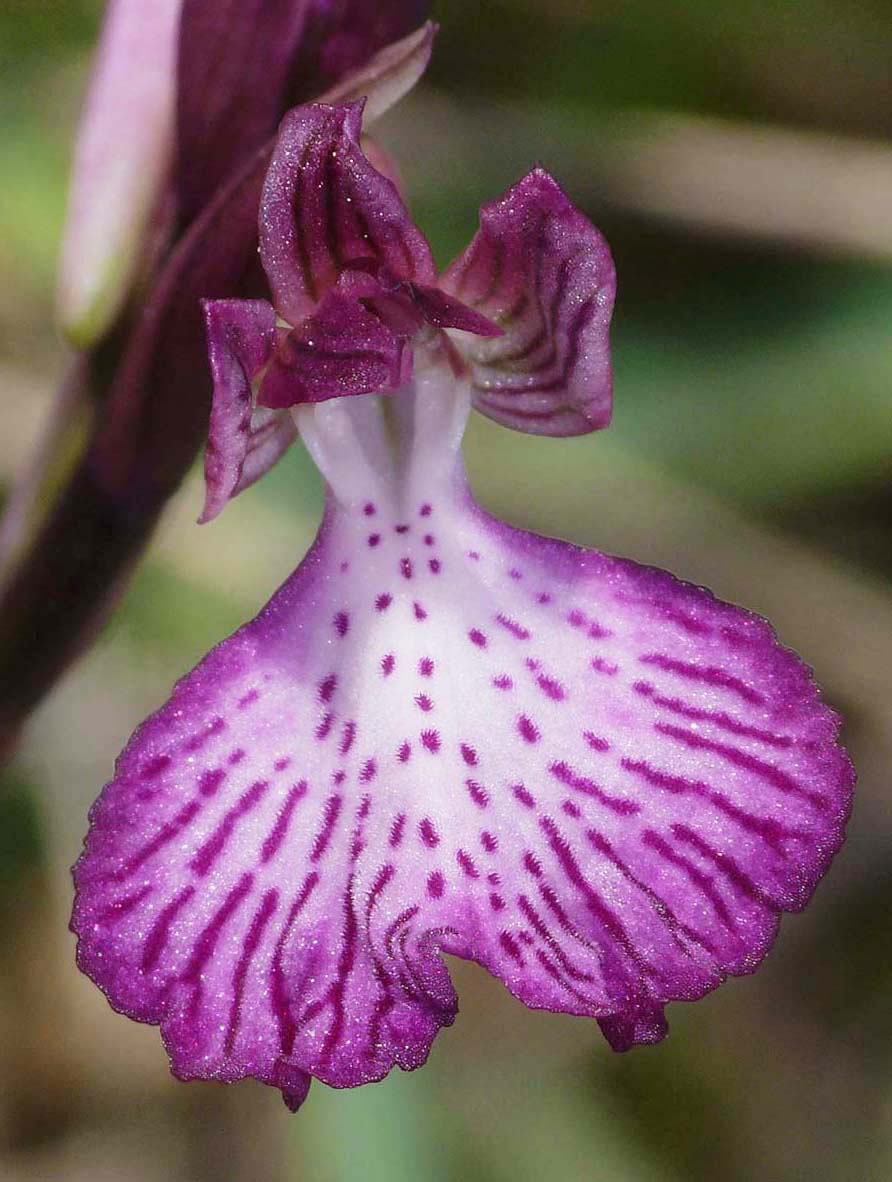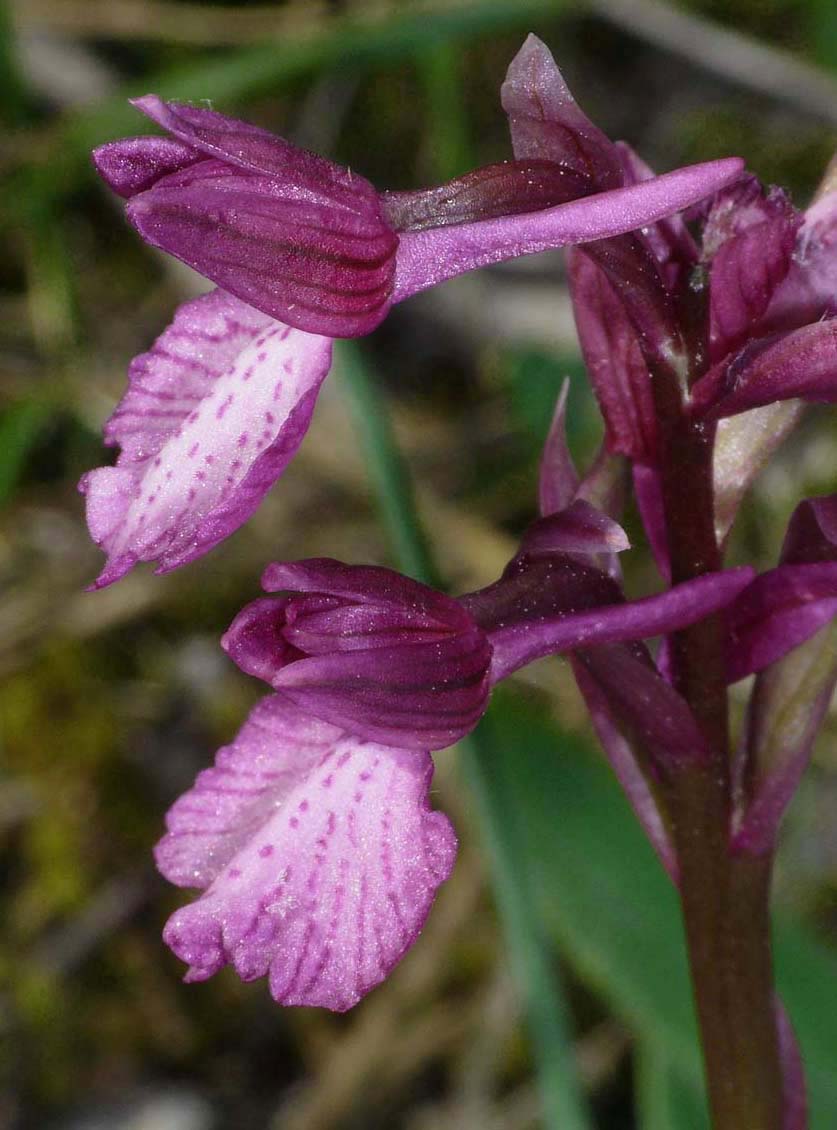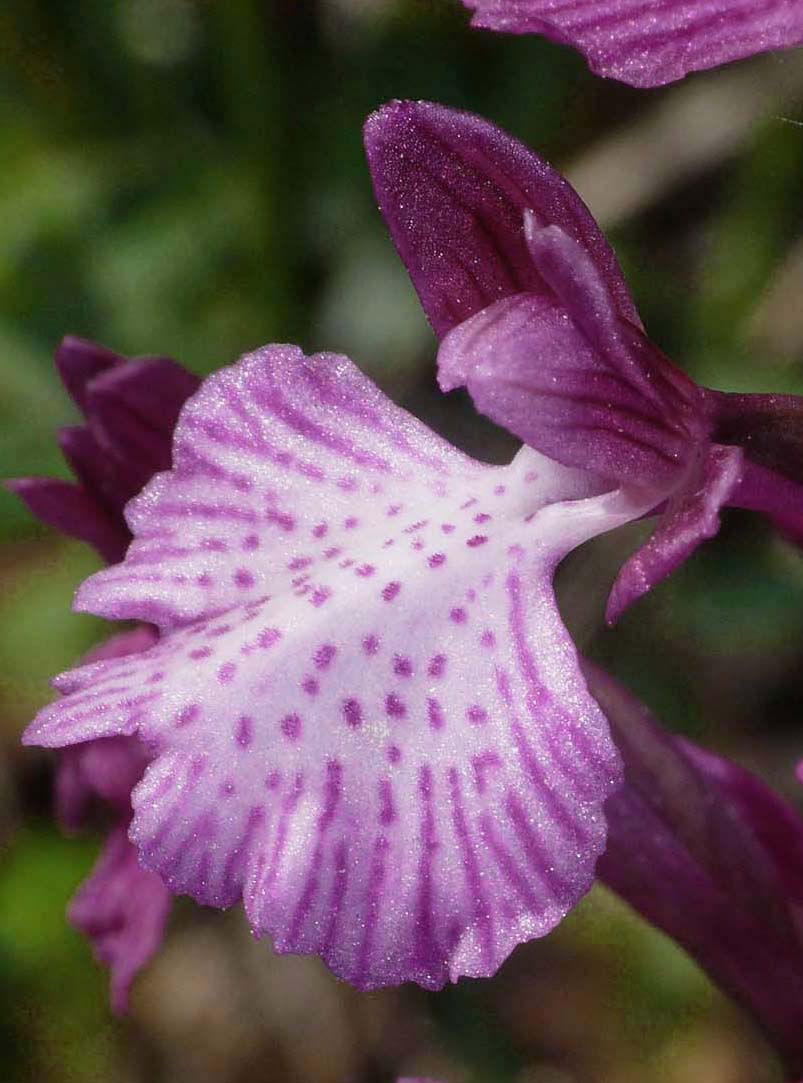The A. papilionacea group is a small but highly distinct collection of
orchids, consisting
of two species, A. papilionacea itself, commonly known as the Pink Butterfly Orchid and the Fan Lipped Orchid, A. collina.
A. papilionacea is a polymorphic species with a wide distribution, factors that unsurprisingly give rise to a significant range of natural and regional variations. First described by Linnaeus as long ago as 1759, the taxon has been intensely studied ever since, leading to the recognition of many forms and the creation of a list of synonyms far too extensive to detail in these pages (no less than 67 in 2013). A genetic study in 1993 comparing sub-species grandiflora, papilionacea and heroica (now aegaea) determined that the minimal genetic difference's discovered, were consistent with nothing more than separate geographic populations within a single cohesive gene pool and that as simple morphs, sub-species status could not be justified. These results, did not receive universal acceptance and new taxa continue to emerge.
A. papilionacea is a polymorphic species with a wide distribution, factors that unsurprisingly give rise to a significant range of natural and regional variations. First described by Linnaeus as long ago as 1759, the taxon has been intensely studied ever since, leading to the recognition of many forms and the creation of a list of synonyms far too extensive to detail in these pages (no less than 67 in 2013). A genetic study in 1993 comparing sub-species grandiflora, papilionacea and heroica (now aegaea) determined that the minimal genetic difference's discovered, were consistent with nothing more than separate geographic populations within a single cohesive gene pool and that as simple morphs, sub-species status could not be justified. These results, did not receive universal acceptance and new taxa continue to emerge.
A. papilionacea subsp. grandiflora
was first formally
described from Seville by Boissier in 1842 and its name
refers appropriately to the large size of the
flower. Grandiflora,
although variable is one of the more easily distinguished forms, being a tall, large flowered plant, similar to the smaller variety vexellifera in the width of the lip and broadness of its shoulders. Its range
is largely western Mediterranean
but is reported to reach as far as Crete and Anatolia in the east. This
breadth of distribution brings it into contact with several other A. papilionacea
taxa and hybridization is inevitably widespread. Intermediate
populations are common and boundaries difficult to define, though a
good place to study this sub-species is Sicily where it is by far the
most dominant form of the species on the island.
The pictures are from Sicily and peninsula Italy, dating from the middle to end of April.
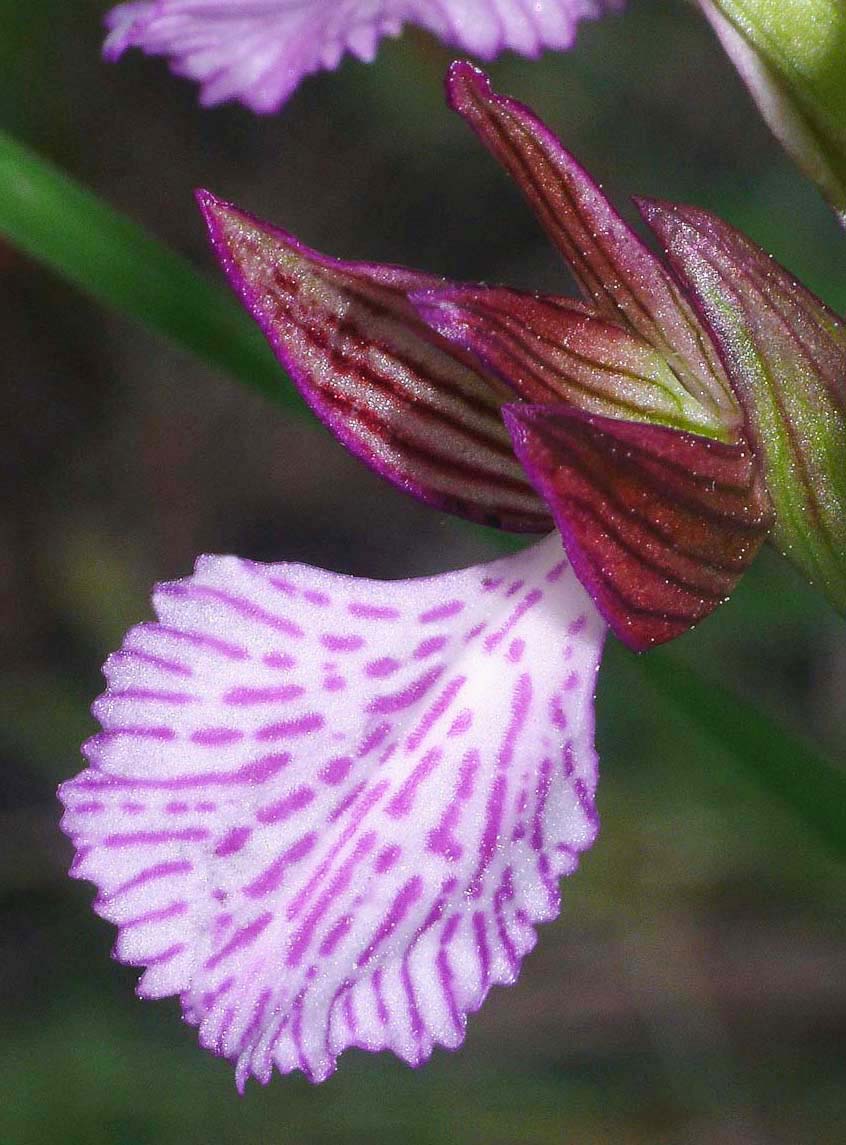
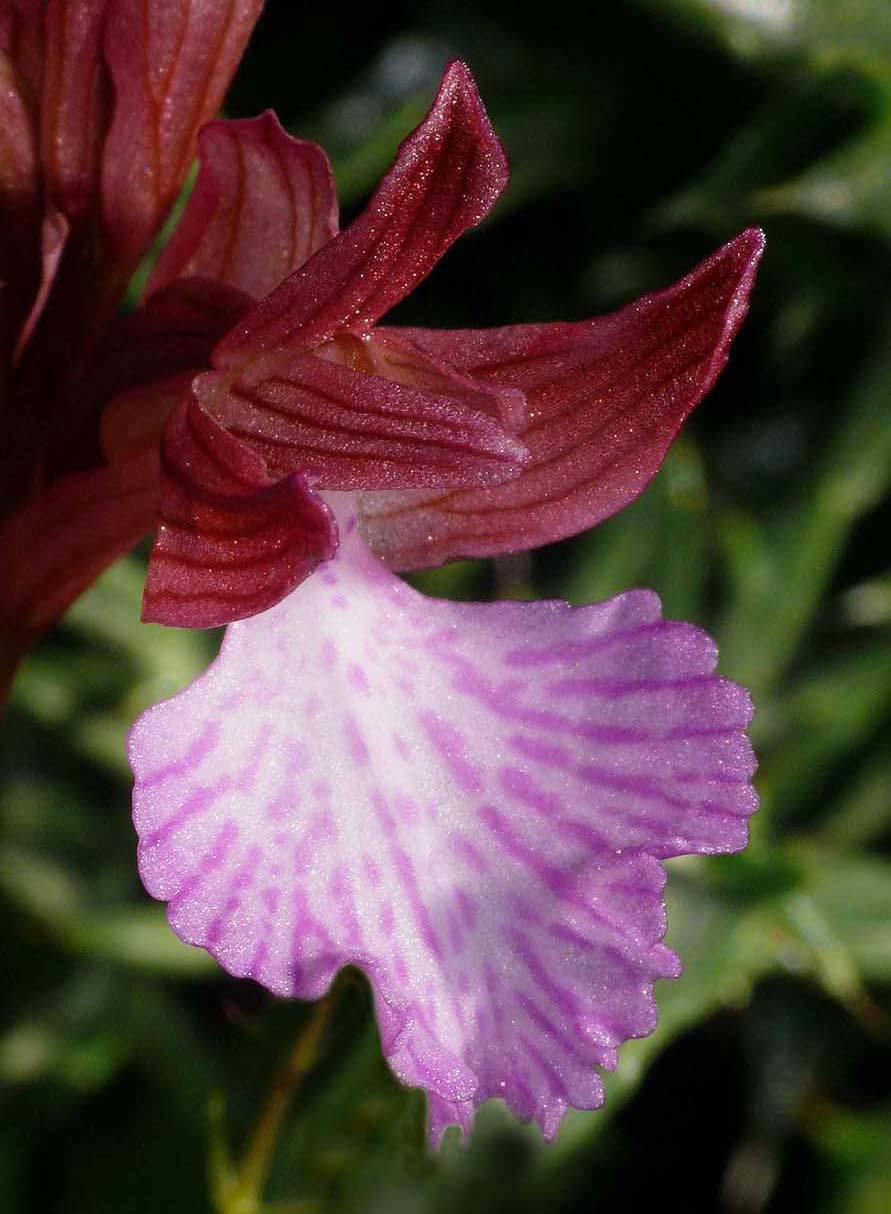
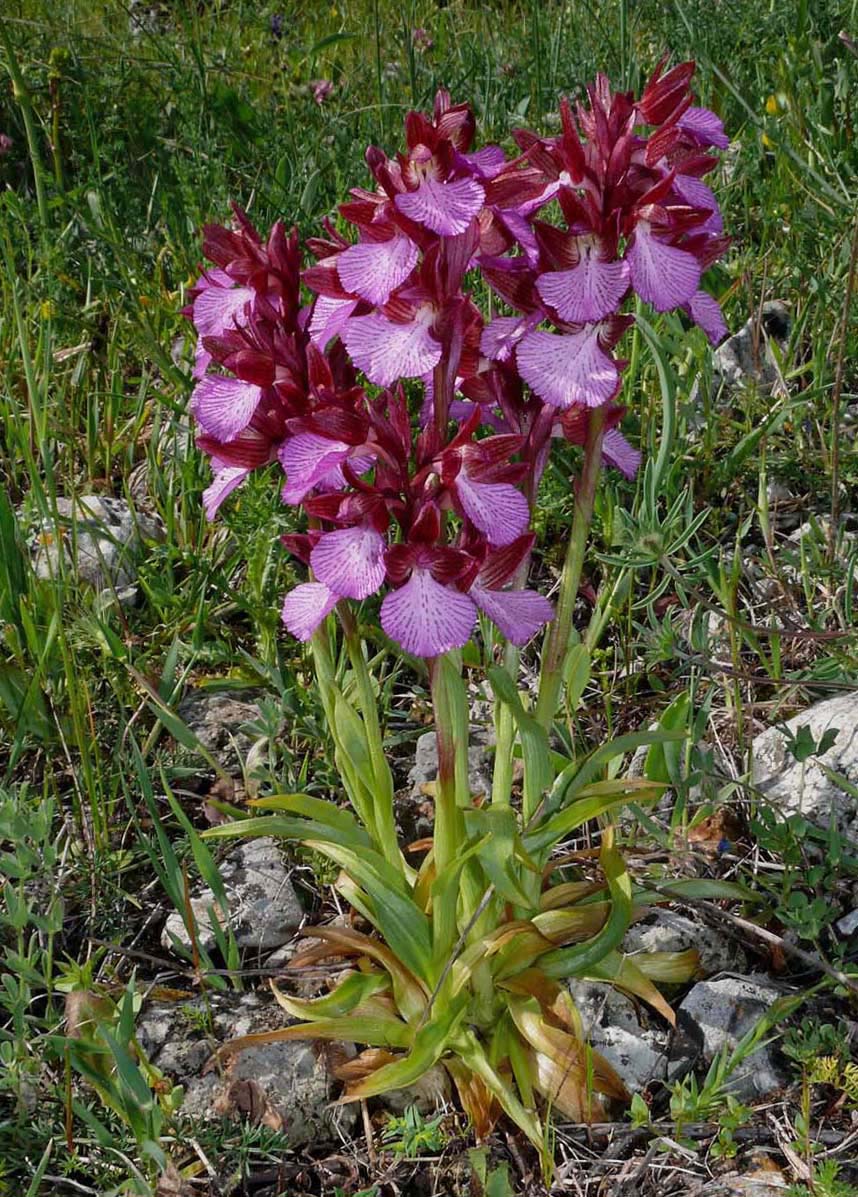
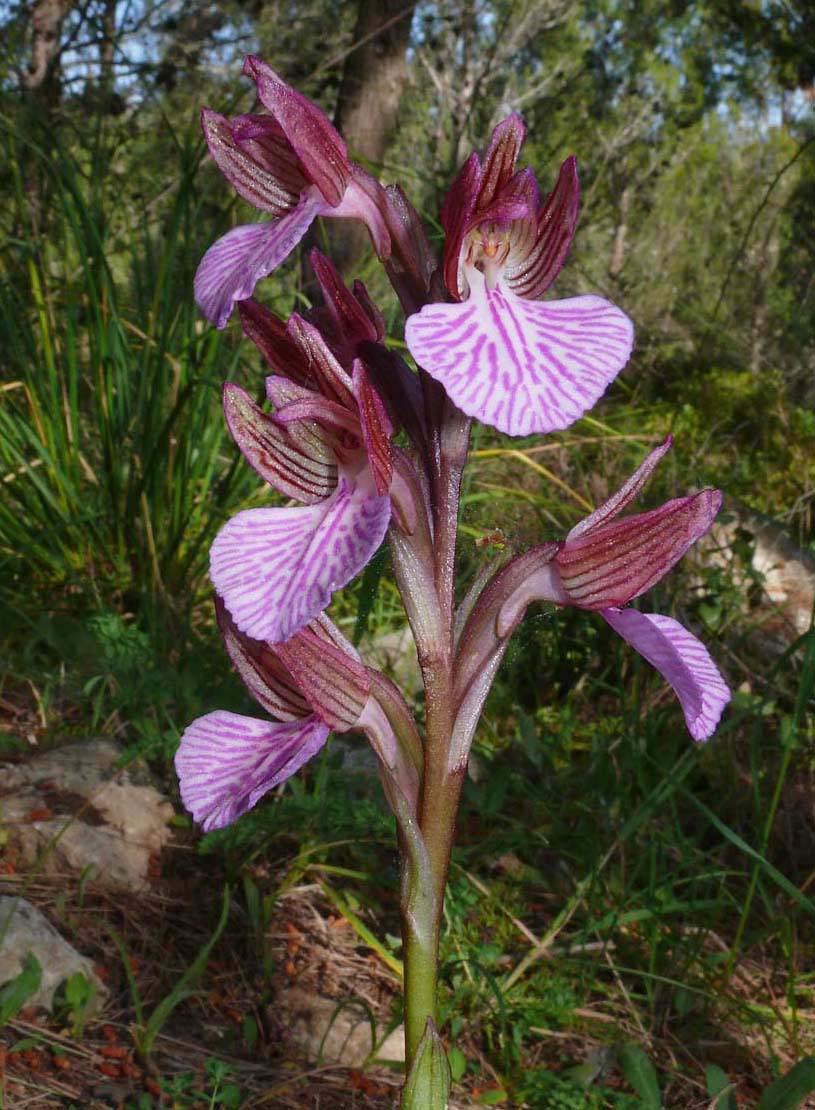
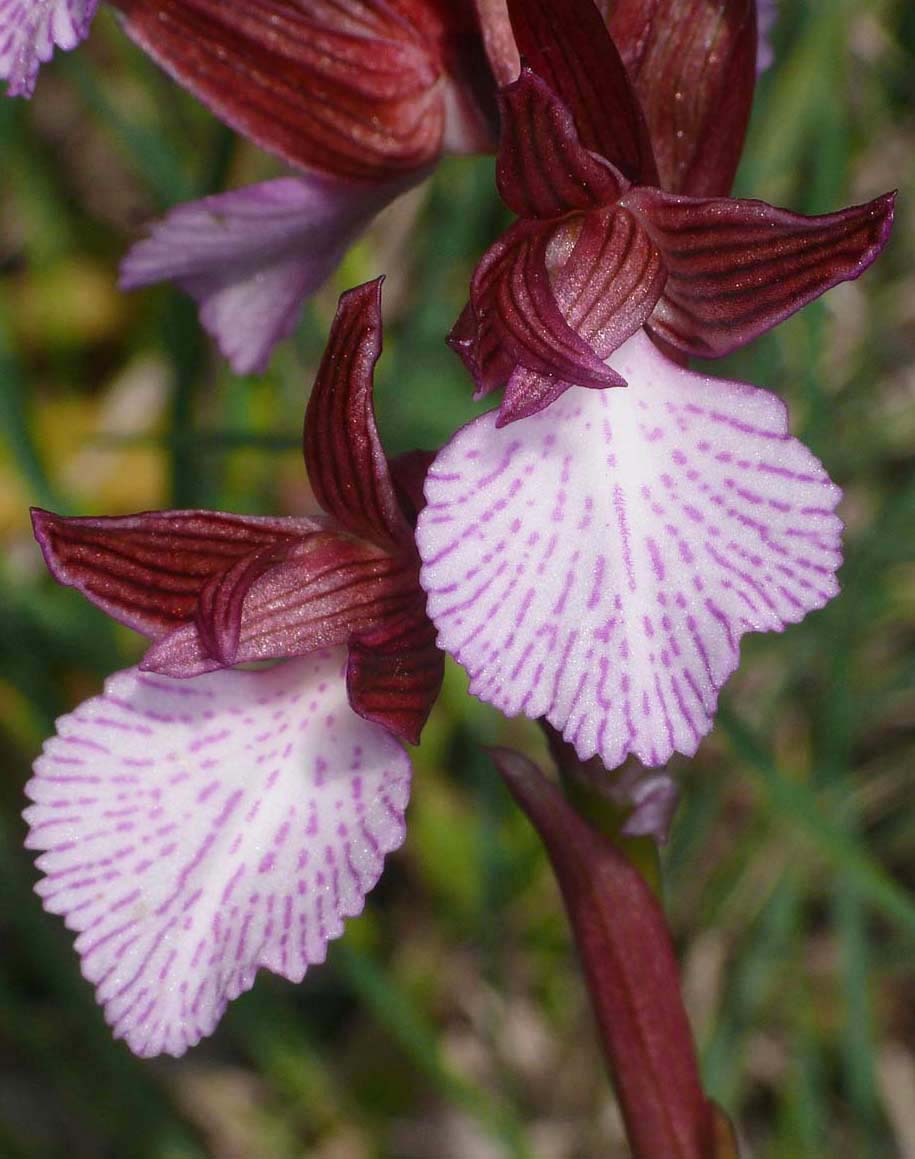
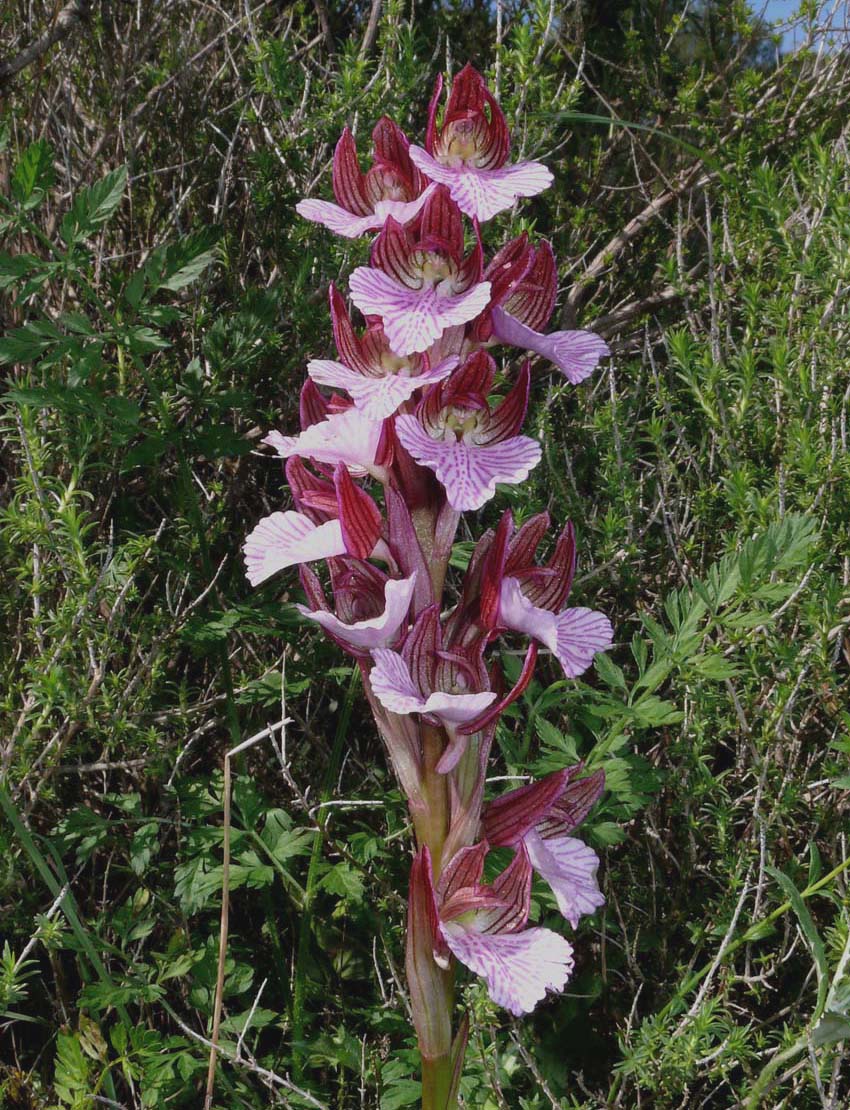
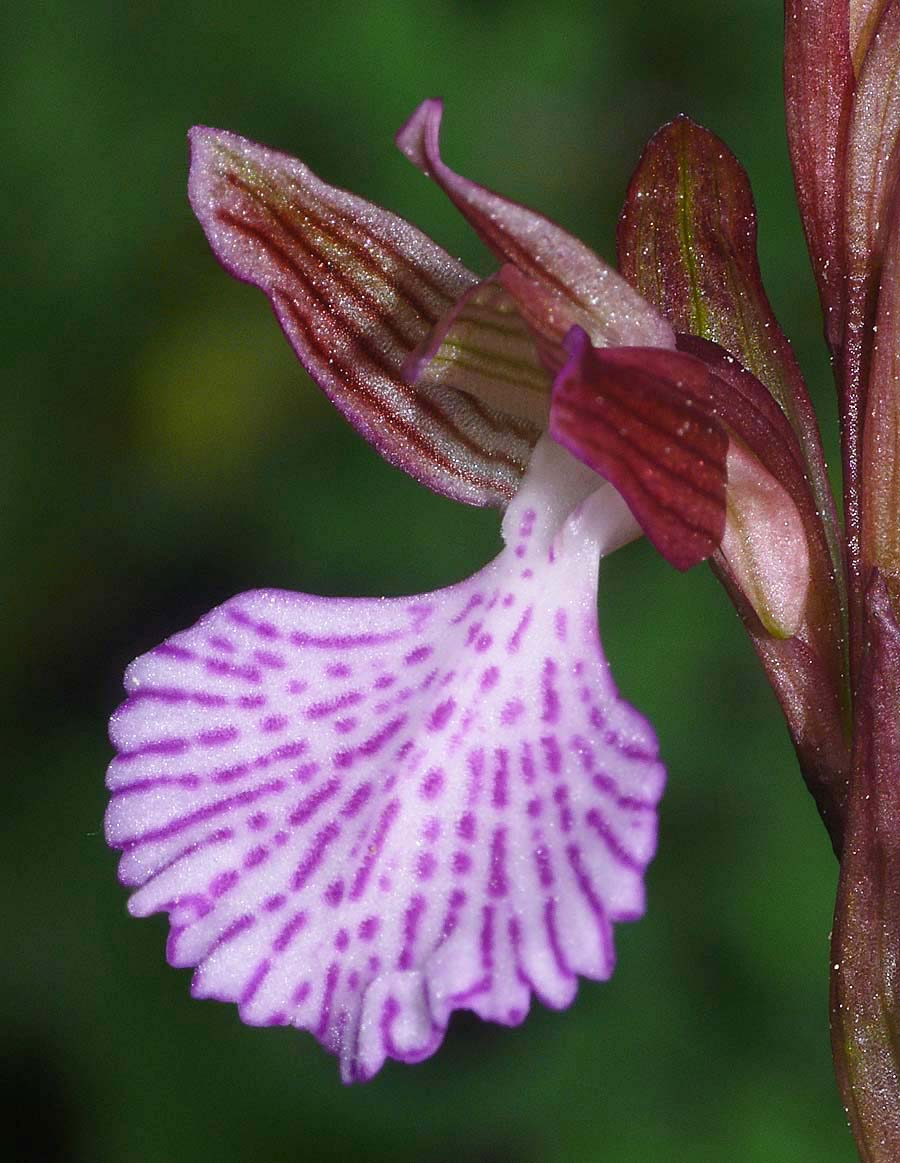
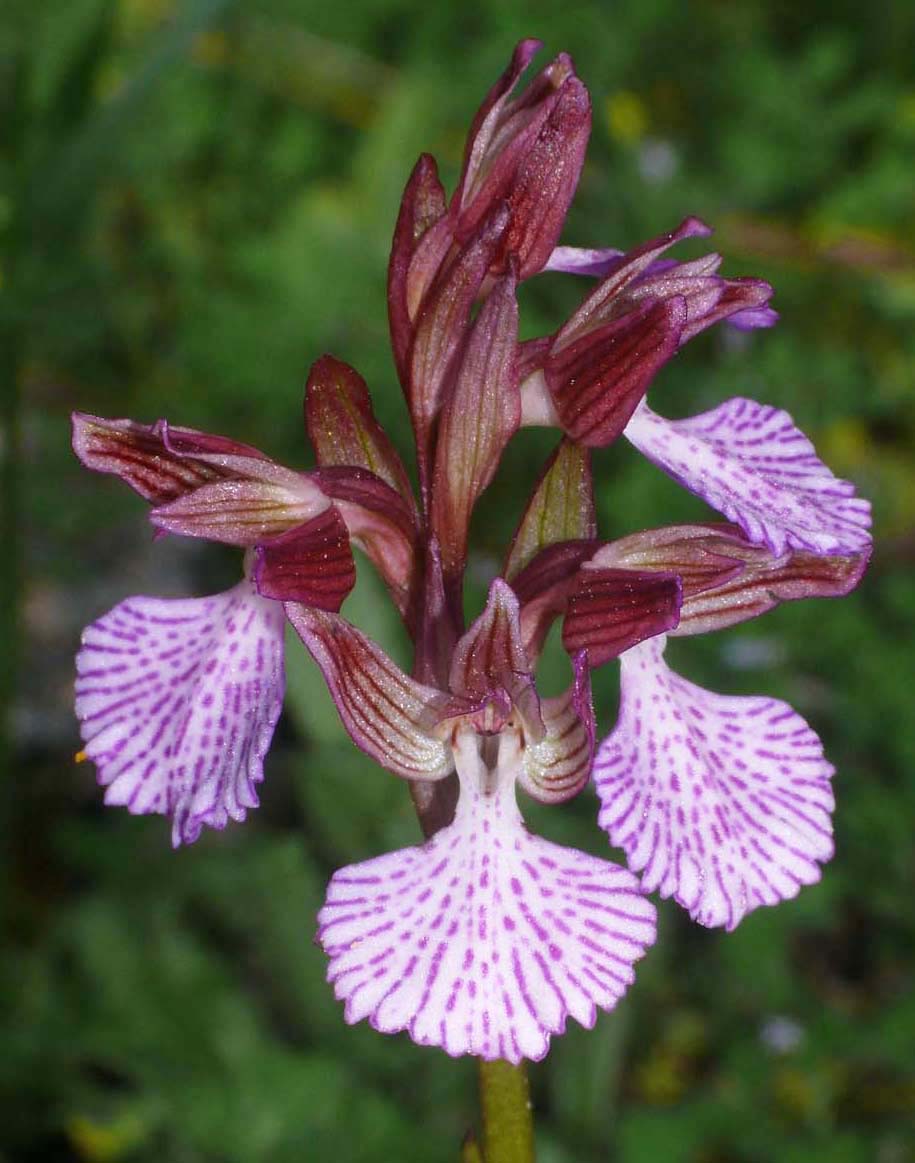
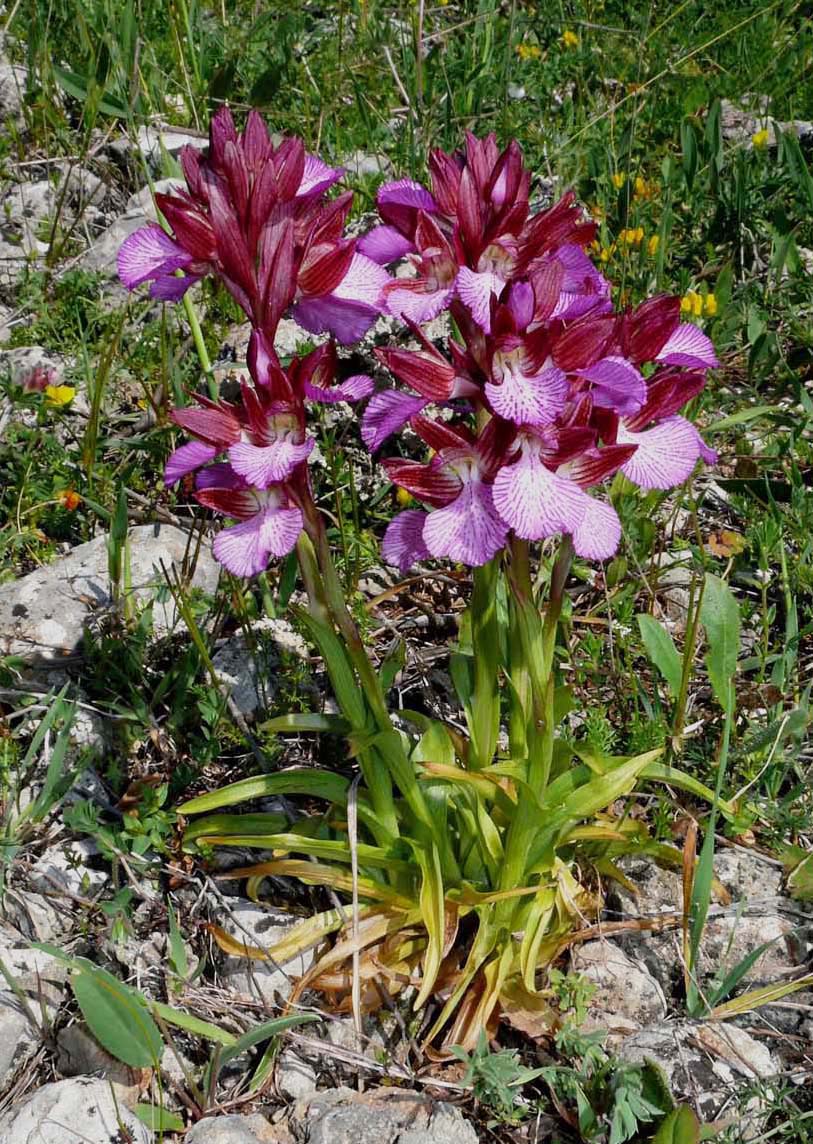
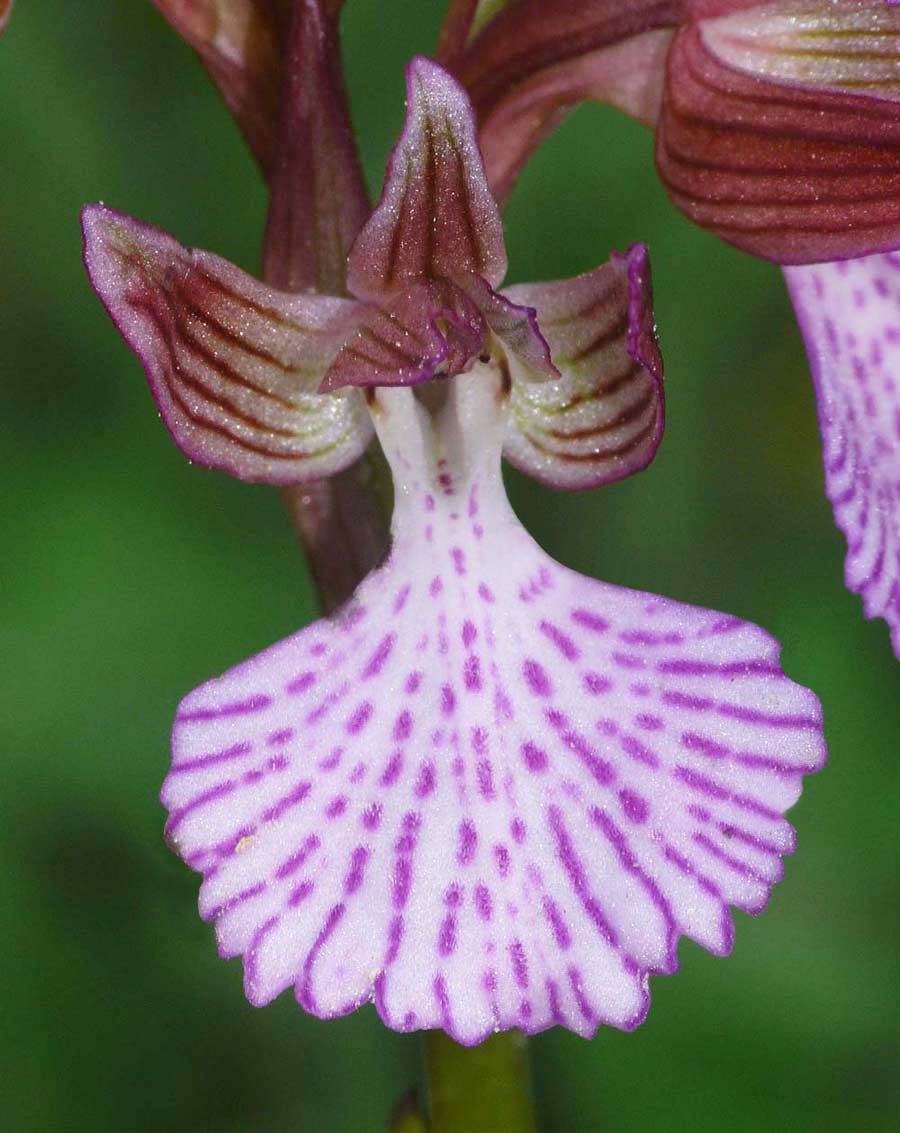
The following photos are from Sicily and depict hybrids with A. morio.
